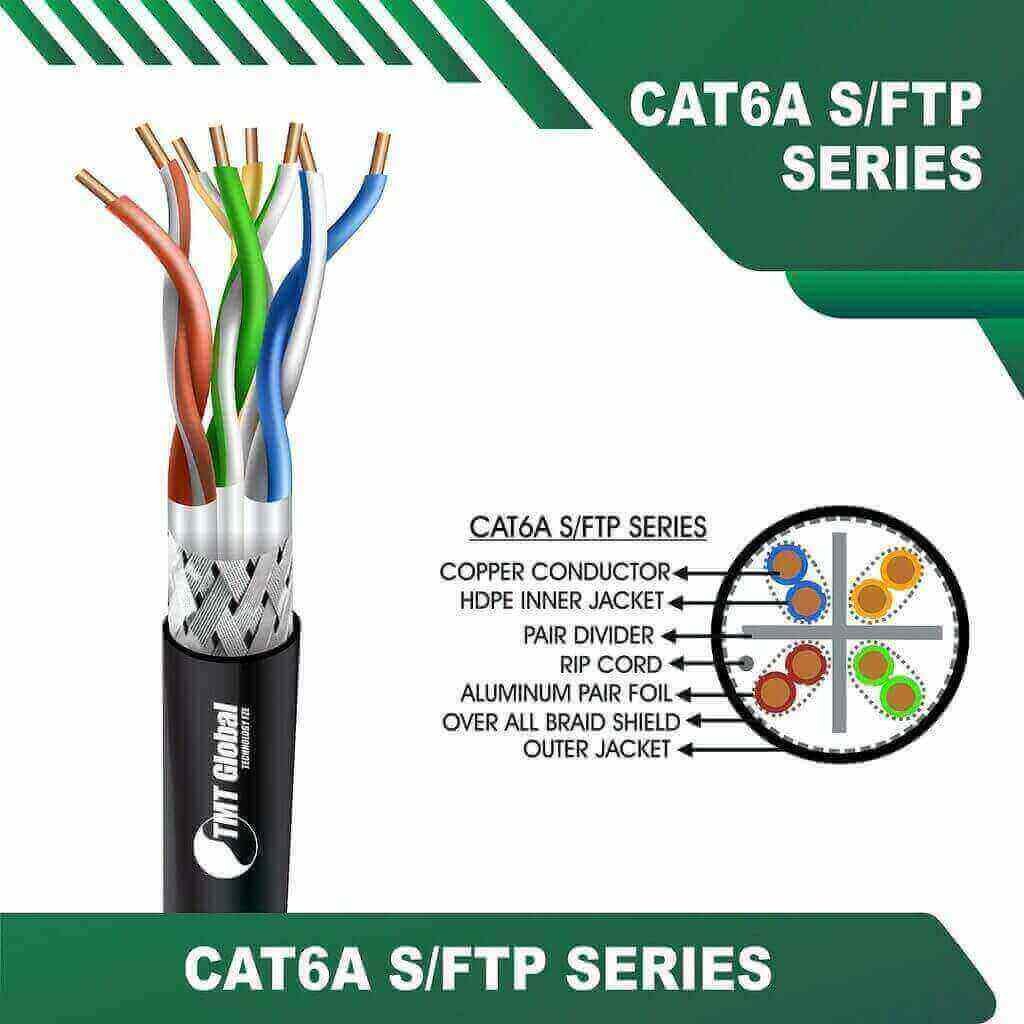network cable lan cable color code : by tmt global technology ltd in uae

Understanding Network Cable Color Codes by TMT Global Technology Ltd UK
Introduction to Network Cabling
Network cabling is the foundational element of modern data communication, facilitating the transfer of information between devices in homes and businesses alike. As technology continues to evolve, the demand for reliable and efficient networking solutions has grown exponentially, making network cabling color coding ethernet cable an indispensable cat 5e cable color code net cable color code cat 6 cable crimping color code component of any robust communication infrastructure. cable coding technology The significance of network cabling cannot be overstated, as it ensures seamless connectivity and data transmission across various network devices.network cable color code



your free sample
There are several types of network cables, each designed to meet specific requirements. The most common types include Ethernet cables, coaxial cables, and fiber optic cables. Ethernet cables, such as Cat5e, Cat6, and Cat7, are widely used in both residential and commercial environments to connect computers, switches, routers, and other networking equipment. Coaxial cables, while primarily used for cable television and broadband internet, can also serve in networking applications. Fiber optic cables, known for their high-speed data transmission capabilities, are increasingly utilized in settings where large volumes of data are handled, such as data centers and enterprise networks.colour regularity in cables lan color cable power cable colour code network color code lan color code network color code
conclusion frequently asked questions
Adhering to network cable color codes is crucial for ensuring proper installation, maintenance, and troubleshooting of wiring systems. Color codes help technicians and network engineers identify cable types, purpose, and their respective connections quickly and efficiently. Misidentifying cables can lead to connectivity color code cat5e issues and network disruptions, which can be costly in terms of both downtime and lost productivity. Therefore, cat 6 wiring colours understanding the color regularity in cables implications of color coding within network cabling is not only cat 5e color code beneficial for professionals but also for individuals looking to enhance their knowledge of networking essentials.
What Are Network Cable Color Codes?
data cable color codes refer to the standardized system of colors assigned to the individual wires within data cable, such as those used in Ethernet and telephone ethernet cable colors connections. These color codes play a crucial role in ensuring proper wiring and establishing reliable connections in network infrastructures. cat6 cable connector color code cat 6 cable connection colour code By following the designated color schemes, technicians can create uniformity across installations, which simplifies troubleshooting and facilitates maintenance in complex networks.
data cable cat6 color code
In the context of Ethernet cabling, the most recognized color code is defined by the T568A and T568B wiring standards. Each of these standards specifies the arrangement of colored wires within the cable. For T568A, the pairings are: white/green, green, white/orange, blue, white/blue, orange, white/brown, and brown.color code for ethernet cable lan cable wiring color code Conversely, T568B employs the following order: white/orange, orange, white/green, blue, white/blue, green, white/brown, and brown. Understanding these color codes is essential for technicians as it helps them to identify color ethernet cable and connect the appropriate wires, thereby ensuring optimal performance of network devices. ethernet cable order color
The significance of adhering to these data cable color codes extends beyond simply following standards. Incorrect wiring based on color codes can lead to substantial implications, such as network failures, data loss, and increased latency. For instance, a miswired connection could cause data packets to be cat v cable color code ethernet colour code improperly routed, ethernet cable color coding networking cable color code resulting in ineffective communication between devices. Moreover, repairing or troubleshooting a network can become significantly challenging if color codes are not observed, leading to costly downtime and inefficiencies for businesses. Therefore, understanding and utilizing data cable color codes is integral for establishing reliable and efficient network systems.
T568A vs T568B Wiring Standards
The T568A and T568B wiring standards serve as the backbone for contemporary structured cabling systems, providing a consistent framework for network cabling. twisted pair Both color code lan cable standards delineate specific color codes for wire pairs used in Ethernet cables, facilitating proper connectivity in telecommunications. ethernet cable colours While they might appear similar at first glance, they feature distinct differences that can impact installation and performance.
One of the most noticeable differences between T568A and T568B lies in their color-coding scheme. In T568A, the color pairs are arranged in the following order: white/green, green, crossover cable ethernet cable color network connectivity white/orange, blue, white/blue, orange, white/brown, and brown. Conversely, T568B maintains a slightly different sequence: white/orange, orange, white/green, blue, white/blue, green, white/brown, and brown. This subtle variation can affect overall network performance if the standards are mixed during installation, leading to connectivity issues.
4 pair lan cable color code
The choice between T568A and T568B often depends on existing infrastructure, compatibility requirements, or regional preferences. T568A is generally recommended for residential applications and is frequently adopted due to its backward compatibility with previous wiring standards. On the other hand, T568B is more cross cable color code commonly seen in commercial environments, particularly in organizations that have established their cabling infrastructure around this standard.
colors what do different ethernet
For optimal performance, TMT Global Technology Ltd UK endorses adherence to one standard throughout a network to minimize the risk of improper connections. Proper twisted pair colour code rj45 documentation cat6 color codes and labeling are also vital in cat6 cable color code for cctv camera maintaining clarity in wiring choices, ensuring that network management remains efficient rj45 color code uk and straightforward. Ultimately, understanding the differences between T568A and T568B will aid technicians and installers in making informed decisions that foster reliable network operations.
Detailed Breakdown of lan cable color code
Understanding the intricacies of network cabling color codes is essential for professionals in the field of information technology. The standard wiring schemes, particularly T568A and T568B, dictate the arrangement and purpose of each wire within data cable, such as Category 5e, Category 6, and beyond. Each wire is crucial for various functions, including data transmission and power delivery over Ethernet.
In the T568A wiring standard, the first pair of wires consists of a white-green wire and a green wire, which are primarily used for data transmission. These wires operate at a frequency of up to 100 MHz, facilitating a robust connection for transmitting signals. The second pair includes a white-orange wire and an orange wire that ethernet cable color codes serve the same purpose, effectively managing network traffic to ensure stability and speed.
colors what do different ethernet
The third pair is composed of a white-brown wire and a brown wire, while the fourth pair contains a white-blue wire and a blue wire. These pairs are employed primarily for auxiliary data transmission and in some applications for power over Ethernet (PoE), which delivers electric power across the same cables used for data without needing additional wiring. With PoE, devices such as VoIP phones and cameras can be powered directly through these cables.internet cat 6 cable color code
Switching to the T568B standard, the placement of the orange and green pairs is reversed compared to T568A. This alternative wiring scheme does not change the fundamental purpose of each cable color but is commonly preferred in certain applications due to historical reasons. Understanding both standards allows for flexibility when implementing new systems or updating existing networks.
By adhering to these standards, IT professionals can ensure that the entire network infrastructure remains efficient and organized, minimizing the risk of connectivity issues. lan colour code The correct interpretation of color codes is fundamental to establishing reliable communication pathways and optimizing overall network performance.
Common Mistakes in Wiring and Their Consequences
Wiring a data cable requires precision and adherence to established color codes. Common mistakes during this process can lead directly to significant issues, impacting both the functionality colour codes for ethernet cables and longevity of the network. One frequent error is the incorrect pairing of wire colors, which disrupts the signal integrity. For instance, mixing up the orange and green pairs in an Ethernet setup can cause severe network slowdowns or complete outages, rendering devices unable to communicate effectively.
Another common mistake is failing to adhere strictly to the T568A or T568B wiring standards. Deviating from these standards can result in incompatible connections, leading to twisted pair increased latency in data transmission and reduced network efficiency. As data packets traverse the network, any network cable wiring color code inconsistency in wiring can create bottlenecks, ultimately affecting the user experience.
different ethernet cable colors
Moreover, not properly stripping the insulation from wires can lead to shorts, causing devices to malfunction or, in extreme cases, damaging the equipment permanently. This negligence may not only impact the immediate connection but can also degrade the functionality of switches and routers over time. lan connector color code Additionally, lan cable colour coding poor cable management, which includes kinks or excessive bending in the wiring, can contribute to long-term performance issues, such as increased crosstalk among cables, adversely affecting the overall speed of the network.
In the worst-case scenario, these wiring mistakes can necessitate complete rewiring of a network, translating to unplanned expenses and downtime. Consequently, it is imperative to follow color codes meticulously to mitigate risks associated with cabling errors. By ensuring proper wiring practices, technicians can uphold network integrity and promote efficient communication among connected devices.
Tools Required for Proper Cabling
When it comes to installing or repairing network cables, having the right tools at your disposal is crucial for ensuring adherence to color coding schemes and achieving optimal connectivity. Below is an outline of the essential tools needed for effective network cabling.
First and foremost, wire strippers are indispensable for any cabling task. These tools are specifically designed to remove the insulation from the wires without causing damage to the conductors. Proper wire stripping is essential to maintain the integrity of the wire, ensuring that connectivity is not compromised. A good wire stripper allows for accurate length adjustments, which is vital for maintaining color code conformity.
Crimping tools are another essential component in the cabling process. ethernet color codes These tools are used to attach connectors, such as RJ45 plugs, to the ends of the network cables. ethernet cables colors Proper crimping ensures that signals are transmitted effectively and that the connections are secure. It is particularly important to adhere to the right color coding when using these tools, to avoid communication errors and malfunctioning networks.
color coding of ethernet cables
Testing devices play a pivotal role in verifying the success of your cabling efforts. Cable testers help identify faults or miswiring within the network setups. They can check for continuity, signal quality, rj45 crimping colour code and any anomalies that could arise from improper installation. By using these testers, technicians can ensure that the color-coded wiring adheres to standard specifications, preventing potential network issues.
Lastly, having a color code chart handy is immensely beneficial during the installation process. This visual aid contains critical information regarding the color coding standards for various network cables, such as T568A and T568B configurations. Using this chart, professionals can ensure that they are following the correct wiring schemes, which is fundamental for effective communication between devices.
Best Practices for Network Cabling Installation
When installing network cables, adhering to high standards and established color codes is paramount for ensuring optimal performance and organization. The proper planning of cable runs is essential; it not only facilitates a more efficient layout but also minimizes potential interference from other electrical sources. Begin by carefully assessing the layout of the area, considering both current and future network needs. This foresight allows for cables to be positioned neatly, avoiding unnecessary bends and kinks that can degrade signal strength.
To maintain the integrity of a network installation, it is advisable to follow specific cable management strategies. Organizing cables using cable trays, conduits, and raceways helps to color code for cat 6 keep them cat5e colour code untangled and protected from environmental factors. Moreover, labeling each cable meticulously reinforces clarity; every label should correspond to its color code and purpose, aiding technicians in identifying issues quickly during maintenance or troubleshooting.
How do I identify my LAN cable?
Your LAN cable is the cable that connects your computer or other device to your internet router or network switch.
Documentation serves as another critical component of best practices in network cabling installation. Creating comprehensive records of network layouts, including diagrams that denote the location and type of cables, supports future modifications and extensions. This kind of documentation is invaluable, especially in larger installations, where complexity can increase significantly. Regular updates to these records as changes occur ensure that all personnel remain informed about the system’s architecture.
In addition, technicians should be aware of the importance of testing cables post-installation. Utilizing tools like cable testers can identify faults, ensuring that installations comply with relevant standards. This diligence not only protects the investment made into network infrastructure but also enhances overall reliability. internet cable colors Emphasizing these best practices during network cabling installations will lead to a well-organized and efficient system, paving the way for seamless connectivity and performance.
Troubleshooting Cabling Issues
Network cabling issues can often be traced back to mistakes in color coding. Understanding the implications of incorrect wiring is crucial for maintaining an efficient network setup. Common issues that arise from cabling mistakes include connectivity problems and reduced network performance. Identifying and rectifying these mistakes can be facilitated by a systematic approach.
The first step in troubleshooting cabling issues involves inspecting the physical cabling layout. Begin by verifying that all cables adhere to the correct color coding standards, typically following the T568A or T568B wiring schemes. Any discrepancies, such as mismatched pairs, can lead to significant communication failures. A visual inspection can oftentimes reveal these mistakes, enabling an immediate correction.
In addition to visual checks, employing the right tools is essential for a thorough investigation. A cable tester can quickly ascertain whether the wiring configurations are accurate. colour coding for network cable This device sends signals through the cables and confirms that they are correctly wired by checking for continuity and verifying the pin configurations. If the tester indicates a fault, it serves as a crucial diagnostic tool to pinpoint whether the issue lies within the wiring or connections.
Another important aspect of troubleshooting involves understanding the potential for interference. External factors such as electrical devices and unshielded cables can contribute to network issues. Ensuring that your network cables are adequately shielded and routed away from sources of interference will promote better connectivity.
Ultimately, adopting a comprehensive approach to troubleshooting cabling issues can empower users to manage their own network setups with confidence. With the right knowledge and tools, diagnosing and correcting common wiring problems becomes a more accessible task, thereby reducing reliance on external technical support. This enhancement in self-sufficiency can lead to better performance and reliability in network operations.
Conclusion and Further Resources
In summary, the importance of network cable color coding cannot be overstated. Proper utilization of color codes in network cabling ensures clarity, efficiency, and ease of management. As discussed throughout this blog post, following established standards for color coding can significantly mitigate errors and enhance troubleshooting processes, especially in complex network environments. Understanding these codes empowers technicians and network administrators to efficiently plan, install, and maintain infrastructure with minimal confusion.
Furthermore, as networks continue to grow in complexity and size, the reliance on standardized practices becomes even more critical. Utilizing the correct color codes can foster improved organization and assist in preventing costly mistakes during both installation and maintenance phases. Hence, investing time to master these color codes is an essential step for professionals in the field of networking.
colored ethernet cables
For those seeking to delve deeper into the topic of network cables and their color coding, TMT Global Technology Ltd UK offers a variety of resources. These include detailed guides, video tutorials, and technical support that cover both basic and advanced concepts related to network installation and maintenance. Readers interested in expanding their knowledge can visit our website for comprehensive articles, downloadable resources, and information on upcoming training sessions designed to benefit both novice and seasoned IT professionals.
In conclusion, understanding network cable color codes is an invaluable skill that enhances efficiency in network management. By leveraging available colored ethernet cables resources lan cable color codes and prioritizing color coding practices, individuals can greatly improve their network infrastructure’s organization and performance. We encourage our readers to actively seek out the information and support necessary to excel in this vital area of technology.
